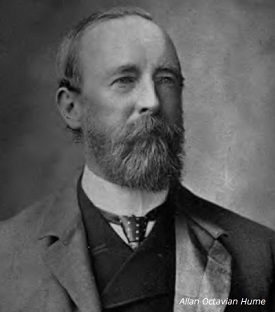
- Modern Indian History Tutorial
- Modern Indian History - Home
- Decline of Mughal Empire
- Bahadur Shah I
- Jahandar Shah
- Farrukh Siyar
- Muhammad Shah
- Nadir Shah’s Outbreak
- Ahmed Shah Abdali
- Causes of Decline of Mughal Empire
- South Indian States in 18th Century
- North Indian States in 18th Century
- Maratha Power
- Economic Conditions in 18th Century
- Social Conditions in 18th Century
- Status of Women
- Arts and Paintings
- Social Life
- The Beginnings of European Trade
- The Portuguese
- The Dutch
- The English
- East India Company (1600-1744)
- Internal Organization of Company
- Anglo-French Struggle in South India
- The British Conquest of India
- Mysore Conquest
- Lord Wellesley (1798-1805)
- Lord Hastings
- Consolidation of British Power
- Lord Dalhousie (1848-1856)
- British Administrative Policy
- British Economic Policies
- Transport and Communication
- Land Revenue Policy
- Administrative Structure
- Judicial Organization
- Social and cultural Policy
- Social and Cultural Awakening
- The Revolt of 1857
- Major Causes of 1857 Revolt
- Diffusion of 1857 Revolt
- Centers of 1857 Revolt
- Outcome of 1857 Revolt
- Criticism of 1857 Revolt
- Administrative Changes After 1858
- Provincial Administration
- Local Bodies
- Change in Army
- Public Service
- Relations with Princely States
- Administrative Policies
- Extreme Backward Social Services
- India & Her Neighbors
- Relation with Nepal
- Relation with Burma
- Relation with Afghanistan
- Relation with Tibet
- Relation with Sikkim
- Relation with Bhutan
- Economic Impact of British Rule
- Nationalist Movement (1858-1905)
- Predecessors of INC
- Indian National Congress
- INC & Reforms
- Religious & Social Reforms
- Religious Reformers
- Women’s Emancipation
- Struggle Against Caste
- Nationalist Movement (1905-1918)
- Partition of Bengal
- Indian National Congress (1905-1914)
- Muslim & Growth Communalism
- Home Rule Leagues
- Struggle for Swaraj
- Gandhi Assumes Leadership
- Jallianwalla Bagh Massacre
- Khilafat & Non-Cooperation
- Second Non-Cooperation Movement
- Civil Disobedience Movement II
- Government of India Act (1935)
- Growth of Socialist Ideas
- National Movement World War II
- Post-War Struggle
- Clement Attlee’s Declaration
- Reference & Disclaimer
Indian National Congress
A. O. Hume, a retired English Civil Servant along with prominent Indian leaders founded all-India organization namely the “Indian National Congress.”

The first session of the Indian National Congress was held at Bombay in December 1885. It was presided by W. C. Bonnerjee and attended by 72 delegates.
Aims of INC
The aims of the National Congress were declared to be −
Promotion of friendly relations among nationalist political workers residing in different parts of the country;
Development and consolidation of the feeling of national unity irrespective of caste, religion, or province;
Formulation of popular demands and their presentation before the Government; and
Training and organization of public opinion in the country.
One of the main aims of Hume in helping to found the National Congress was to provide an outlet i.e. 'a safety valve'—to the increasing popular discontent against British rule.
In 1879, Wasudeo Balwant Phadke, a clerk in the commissariat department, had gathered a band of Ramoshi peasants and started an armed uprising in Maharashtra. Though this crude and an ill-prepared attempt was easily crushed, it was a portent of events to come.
Hume as well as other English officials and statesmen were afraid that the educated Indians might provide leadership to the masses and organize a powerful rebellion against the foreign government. As Hume put it: "A safety valve for the escape of great and growing forces generated by our own action was urgently needed."
Hume believed that the National Congress would provide a peaceful and constitutional outlet to the discontent among the educated Indians and would thus help to avoid the outbreak of a popular revolt.
The National Congress represented the urge of the politically conscious Indians to set up a national organization to work for their political and economic advancement.
In any case, the Indian leaders, who cooperated with Hume in starting this National Congress, were patriotic men of high character who willingly accepted Hume's help as they did not want to arouse official hostility towards their efforts at so early stage of political activity.
Surendranath Banerjea and many other leaders of Bengal had not attended the first session of the National Congress as they were busy with the Second National Conference at Calcutta.
In 1886, Surendranath Banerjea and other leaders of Bengal merged their forces with those of the National Congress whose second session met in Calcutta in December 1886 under the president-ship of Dadabhai Naoroji.
From the Calcutta session, the National Congress became 'the whole country's Congress'. Its delegates, numbering 436, were elected by different local organizations and groups.
The National Congress met every year in December, in a different part of the country.
The number of its delegates soon increased to thousands. Its delegates consisted mostly of lawyers, journalists, traders, industrialists, teachers, and landlords.
In 1890, Kadambini Ganguli, the first woman graduate of Calcutta University addressed the Congress session.
This was symbolic of the fact that India's straggle for freedom would raise Indian women from the degraded position to which they had been reduced for centuries past.
Some of the great presidents of the National Congress during its early years were Dadabhai Naoroji, Badruddin Tyabji, Pherozeshah Mehta, P. Ananda Charlu, Surendranath Banerjea, Ramesh Chandra Dutt, Ananda Mohan Bose, and Gopal Krishna Gokhale.